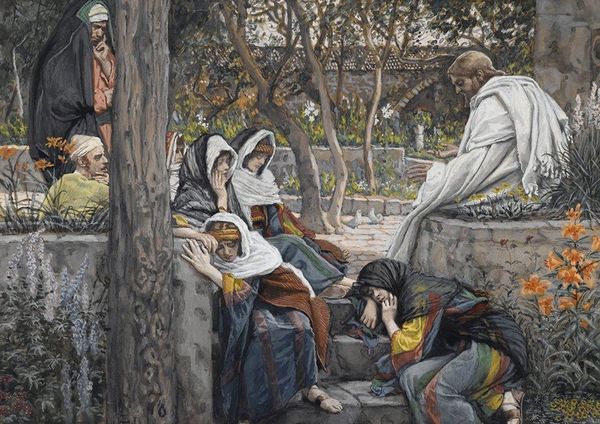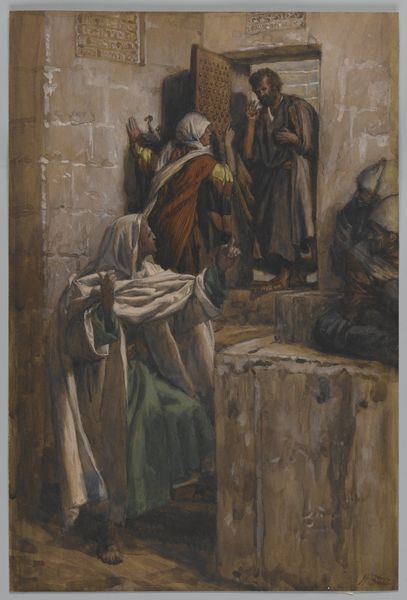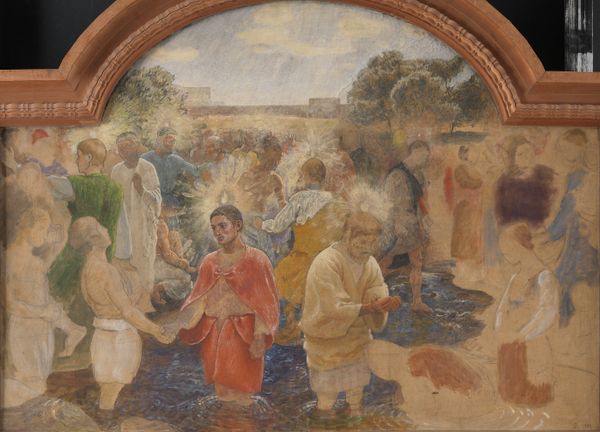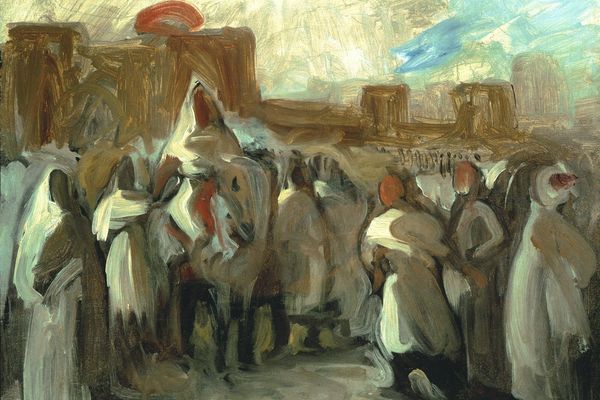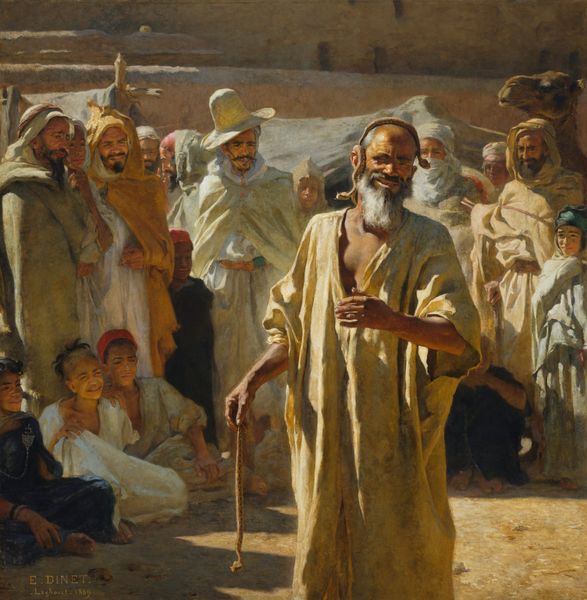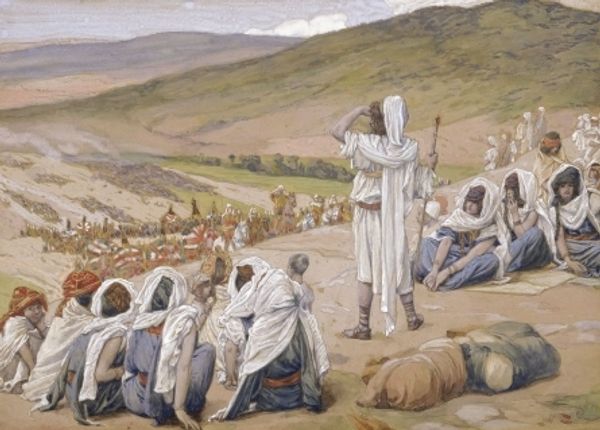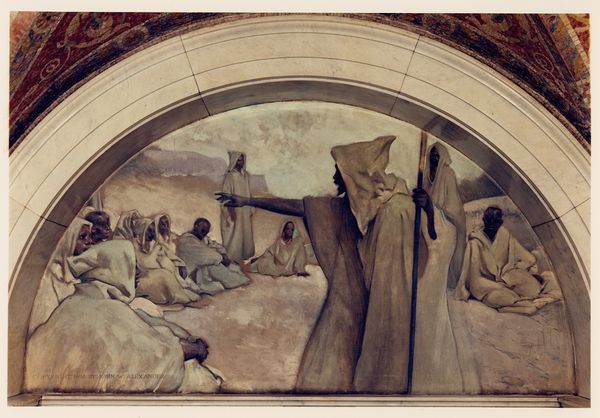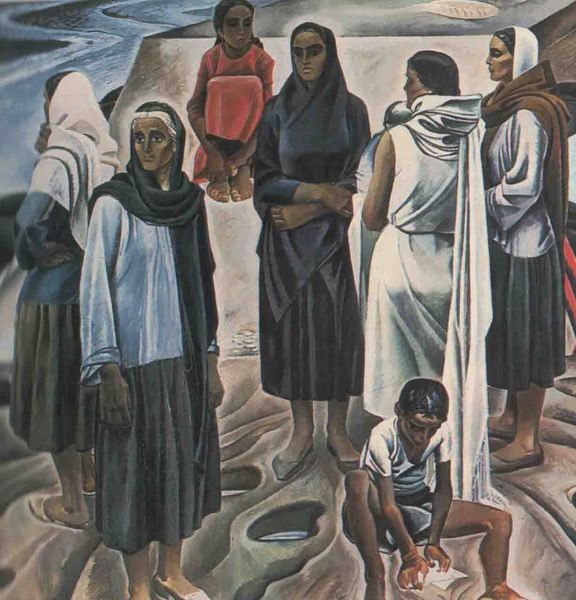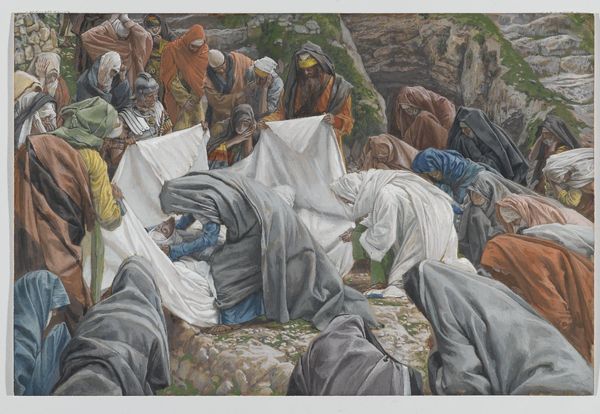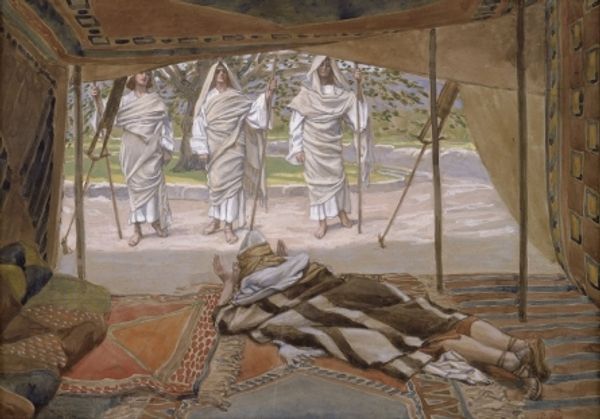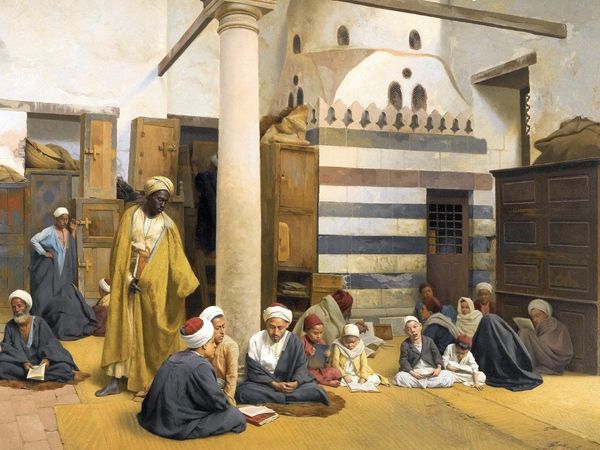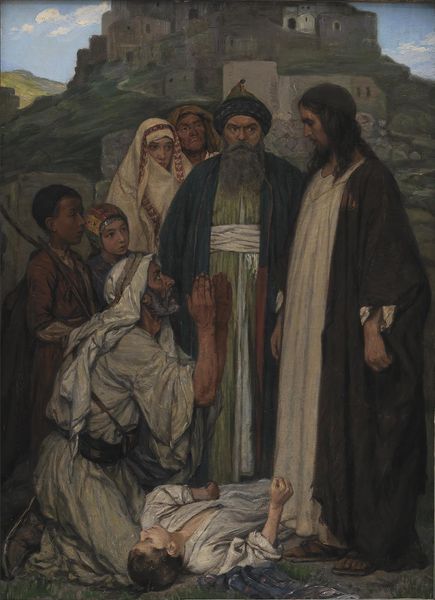
tempera, painting
#
medieval
#
water colours
#
narrative-art
#
tempera
#
painting
#
landscape
#
figuration
#
painterly
#
history-painting
Dimensions: 146 cm (height) x 225.5 cm (width) (Netto)
Curator: The somber atmosphere really strikes me. A quiet solemnity. Editor: I see it too. Let's delve into that as we consider Niels Larsen Stevns's "The Wedding at Cana," dating from 1915 to 1917. It's a tempera painting currently held at the SMK, Statens Museum for Kunst. Curator: What interests me immediately is the spatial organization – the foregrounded stone vessels, almost like baptismal fonts, and the haloed figures of Jesus and Mary. It presents a deeply personal take on what is usually such a bombastic display. It almost seems critical of spectacle. Editor: Absolutely, and that reading gains further traction when we think about the historical context of its creation. Think about World War One unfolding as he created it. Is it a direct response? Perhaps not explicitly, but it reflects a questioning of values, a return to simple virtues, even a certain melancholy. The wedding becomes a moment of quiet introspection, a possible pathway, a reevaluation of what we are celebrating. Curator: I agree. Stevns isn't interested in celebrating wealth or power, but community, family. The hazy atmosphere, those somber hues—it almost feels like a dream or a memory. A space where these foundational shifts can even be envisioned. What kind of narratives do you think Stevns might have been trying to disrupt with the historical context in mind? Editor: I think Stevns challenges prevailing notions of power by situating this famous episode within a landscape of everyday life, stripping away the excessive theatricality. It also highlights the agency of Mary as the prime mover behind Jesus’s first miracle. The overall public role of art would then need to respond to these changes through challenging the norm. Curator: Exactly, making Mary's role less of a subservient one, she demands consideration, change, even from divinity. The halo then becomes a marker not only of divine status, but also resistance. Editor: And these seemingly ordinary materials -- tempera on canvas – contrast so dramatically with the opulence often associated with depictions of religious miracles. A material act of defiance perhaps? It's a powerful testament to how art can be used to question established narratives. Curator: The interplay of historical subject matter and modern concerns really illuminates the artist's ability to create something both timeless and deeply resonant. Editor: Agreed, Stevns' work really pushes us to reconsider the narratives we tell ourselves and the values we uphold.
Comments
No comments
Be the first to comment and join the conversation on the ultimate creative platform.
